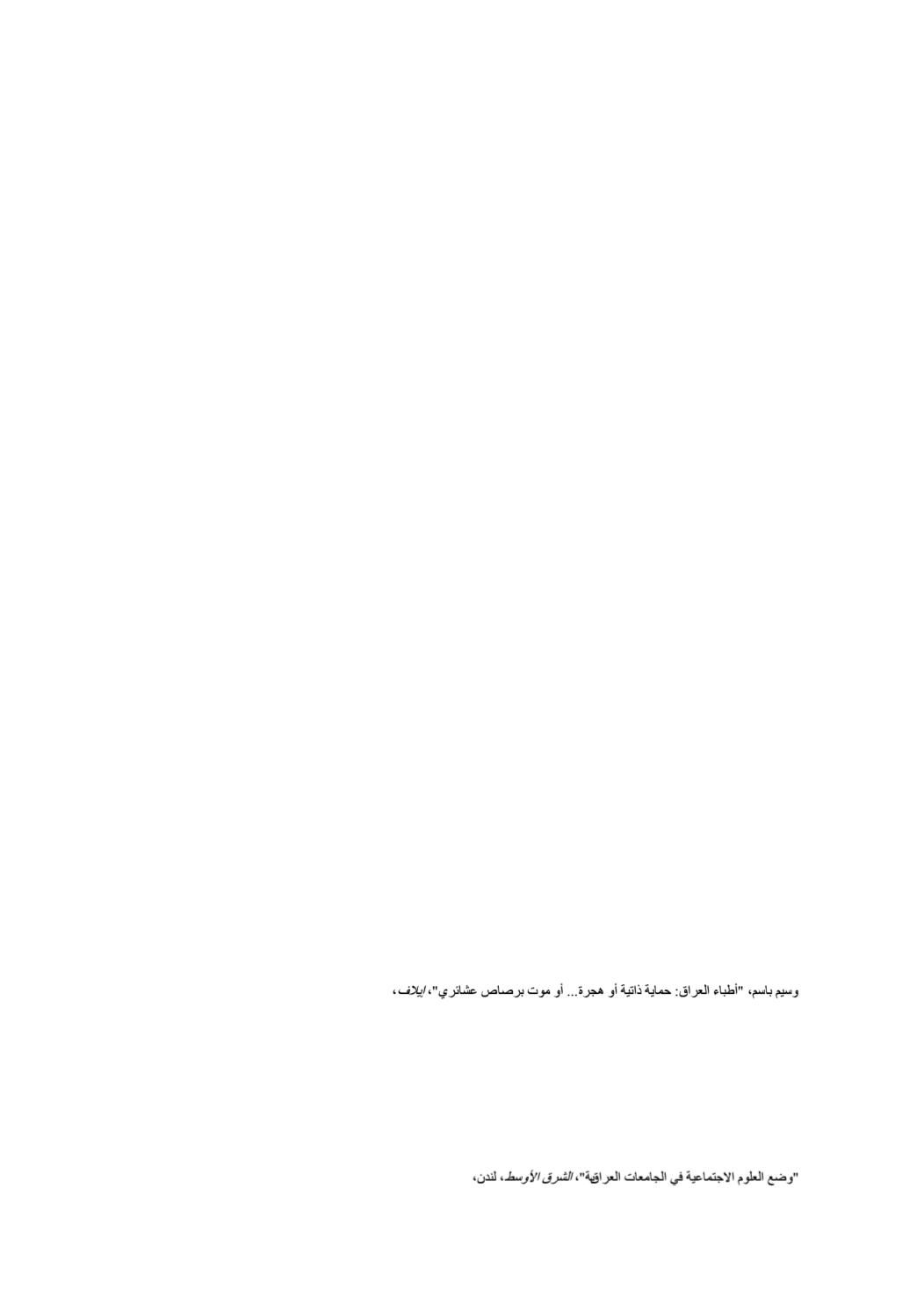

The humanitarian disaster in Iraq: beyond the atrocities of Daesh
83
A report published by the International Journal of Health Planning andManagement
in 2011 points to how the deteriorating quality of health services and violence towards
doctors was protracted beyond the episodes of defence in the hospitals that were seen
in the days after the fall of Baghdad. These attacks were systematically repeated until
2006, returning to worrying levels in 2009 and 2011 and leaving a health system that
was unsuitable for a country with Iraq’s resources: “Up to 75 per cent of Iraq’s doctors,
pharmacists and nurses have left their jobs since the U.S.-led invasion in 2003. Almost
70% of critically injured patients with violence-related wounds, die in emergency
and intensive care units due to a shortage of competent staff and a lack of drugs and
equipment”.
18
According to reports and stories that appeared in the press,
19
in addition to this
difficult situation, doctors also have to deal with tribes taking the law into their own
hands against doctors they accuse of negligence when treating their immediate family.
The conflict provoked by Daesh has done little more than worsen the situation in zones
under their control, with professionals fleeing and hospitals being bombed,
20
as well as
a lack of medicine.
The in-depth analysis of the education system in Iraq is almost identical: during the
previous governments there was a State policy strongly backing public education for all
Iraqis, both male and female. The system and structures were damaged by the embargo
and war but still maintained very good percentages of school attendance and university
students: “Iraq used to have one of the best education systems in the Middle East,”
asserted Roger Wright, UNICEF representative in Iraq. “At the moment we have clear
proof of how much this system has deteriorated. Now millions of children in Iraq go to
schools that don’t have water or health services, and have walls and windows that are
destroyed or leaking roofs. The system is overloaded”.
21
The arrival of sectarianism in the occupying governments has seen the control of
education system become a number-one priority: curricula have been changed, religious
practice has been introduced in schools, university professors have been hounded with
a murder campaign that has caused at least 324 deaths
22
and thousands have migrated.
Universities have come to form part of the distribution of power between new political
parties and their militias, who control the campus terrorising students and teachers.
23
Schools have gone from being one of the cornerstones of Iraqi society to a place of
18 UNICEF (2011).
Multiple Indicators Cluster Survey
.
19
.12/11/5
http://www.elaph.com/Web/news/2012/11/771943.html?entry=Iraq20 TheFallujahGeneralHospitalhasbeenbombedbytheIraqiarmy36timessincethecitywastakenoverbyrebels
in January 2014. Source: director of the Fallujah University Hospital, phone conversation, 17 March 2015.
21 UNICEF (20014). Iraqi schools suffering from neglect and war. In: UNICEF [online]. Available in:
http://www.unicef.es/actualidad-documentacion/noticias/las-escuelas-en-iraq-victimas-tambien-del-abandono-y-la-guerra
22 CEOSI (2013). List of university teachers murdered in Iraq during the occupation period. In: Iraqsolidaridad.
org [online]. Available in:
http://www.iraqsolidaridad.org/wordpress/wp-content/uploads/2013/11/Lista-de-docentes-asesinados-noviembre-de-2013.pdf
23
.
2008/2/6



















